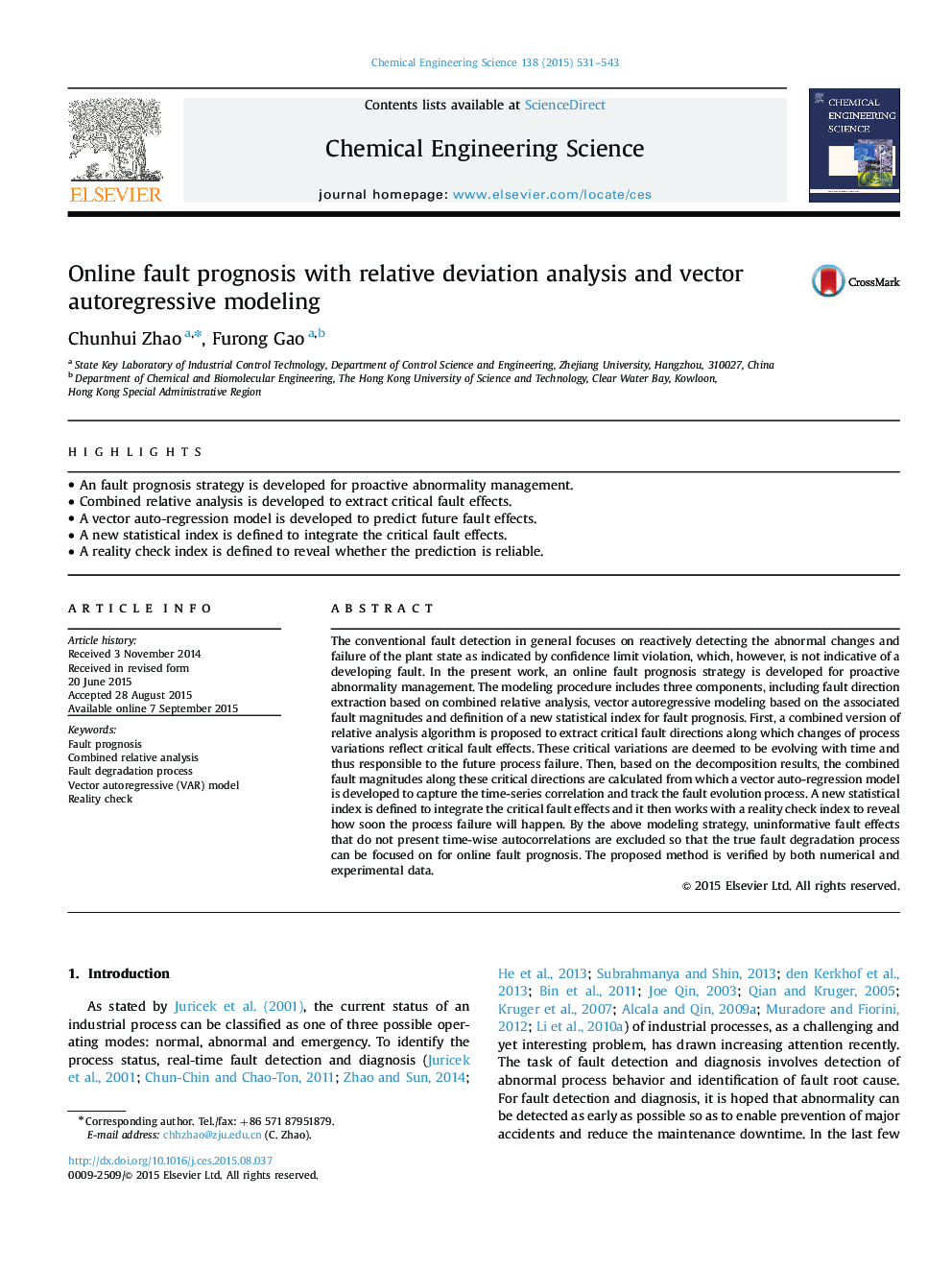| Article ID | Journal | Published Year | Pages | File Type |
|---|---|---|---|---|
| 154625 | Chemical Engineering Science | 2015 | 13 Pages |
•An fault prognosis strategy is developed for proactive abnormality management.•Combined relative analysis is developed to extract critical fault effects.•A vector auto-regression model is developed to predict future fault effects.•A new statistical index is defined to integrate the critical fault effects.•A reality check index is defined to reveal whether the prediction is reliable.
The conventional fault detection in general focuses on reactively detecting the abnormal changes and failure of the plant state as indicated by confidence limit violation, which, however, is not indicative of a developing fault. In the present work, an online fault prognosis strategy is developed for proactive abnormality management. The modeling procedure includes three components, including fault direction extraction based on combined relative analysis, vector autoregressive modeling based on the associated fault magnitudes and definition of a new statistical index for fault prognosis. First, a combined version of relative analysis algorithm is proposed to extract critical fault directions along which changes of process variations reflect critical fault effects. These critical variations are deemed to be evolving with time and thus responsible to the future process failure. Then, based on the decomposition results, the combined fault magnitudes along these critical directions are calculated from which a vector auto-regression model is developed to capture the time-series correlation and track the fault evolution process. A new statistical index is defined to integrate the critical fault effects and it then works with a reality check index to reveal how soon the process failure will happen. By the above modeling strategy, uninformative fault effects that do not present time-wise autocorrelations are excluded so that the true fault degradation process can be focused on for online fault prognosis. The proposed method is verified by both numerical and experimental data.
